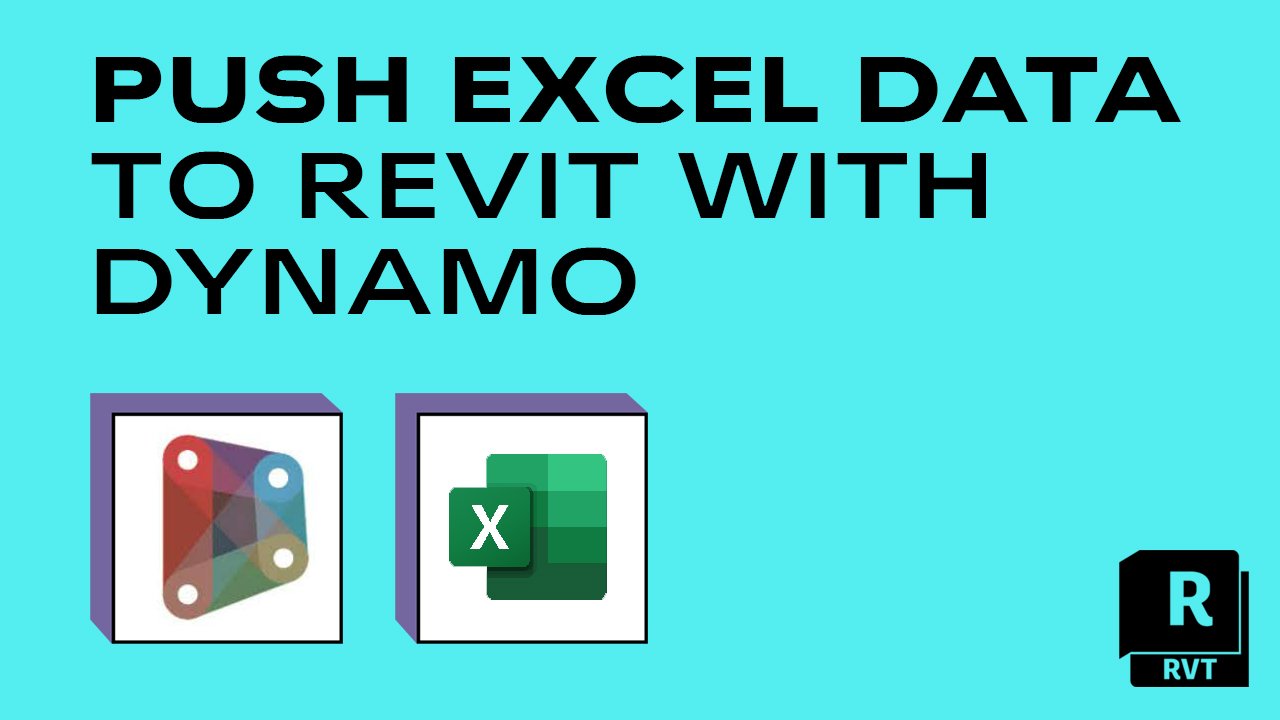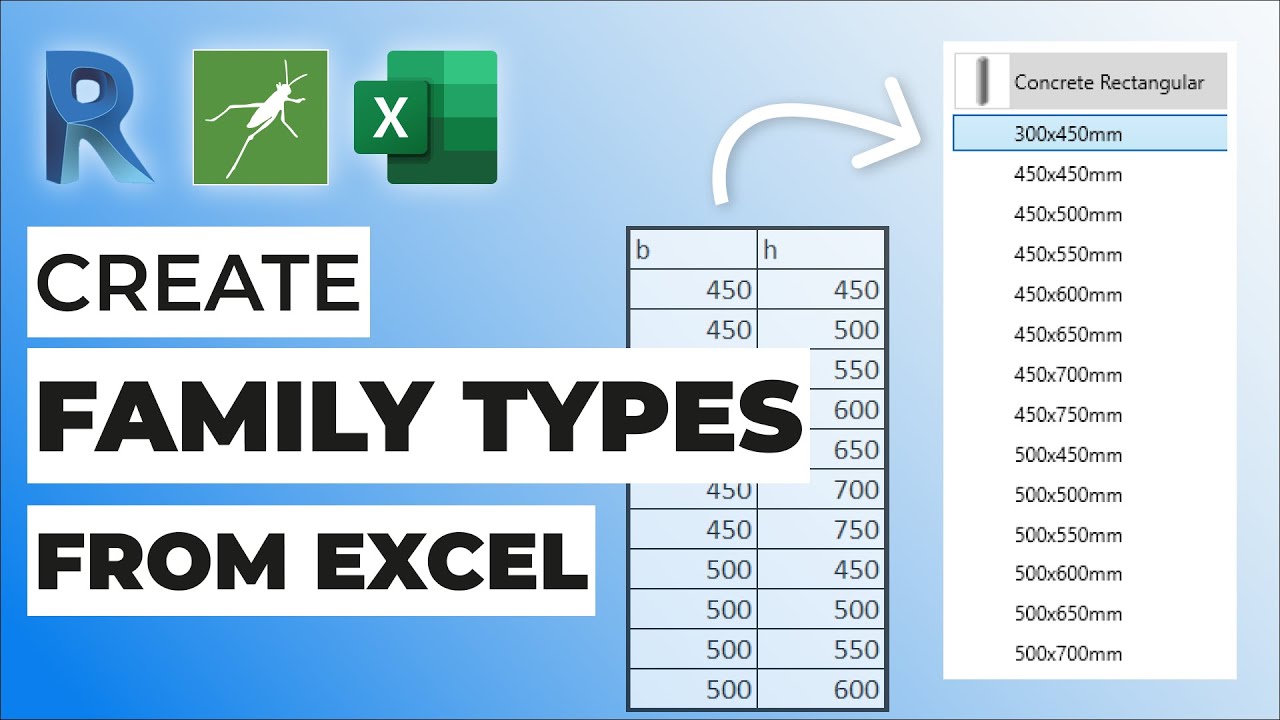Unlock New Opportunities with Ingenious Revit Plugins
Wiki Article
Excel-to-Revit: A Game-Changing Workflow for Architectural Style - Revealing the Secrets
Introducing excel-to-revit, the game-changing process that will certainly change your layout process. With excel-to-revit assimilation, you can enhance your architectural style, unlock performance, and maximize collaboration within your group. Obtain all set to take your building design to the following degree with excel-to-revit!The Power of Excel-to-Revit Combination

Envision the convenience of having the ability to modify and update job information in Excel, and instantly see those modifications shown in your Revit design. Say goodbye to manual information access or tiresome updates. With Excel-to-Revit integration, you can save time and lower mistakes by leveraging the power of Excel's solutions and functions to automatically create precise data in Revit.
Not just does this assimilation boost efficiency, but it likewise enhances collaboration among team members. You can conveniently share Excel documents with associates, that can then import the information into their Revit models. This advertises a smooth exchange of information and makes certain that everybody is dealing with the most up-to-date information.

Enhancing Architectural Layout With Excel-To-Revit
Improving building style is simplified with the usage of Excel-to-Revit (revit add ins). With this effective assimilation, you can optimize your operations and save useful time throughout the design process. By leveraging the capabilities of Excel and Revit, you can perfectly move data between both platforms, removing the requirement for manual data access and lowering the risk of mistakesExcel-to-Revit enables you to import and export information effortlessly, allowing you to quickly upgrade and change your building designs. You can develop routines, calculate quantities, and produce reports in Excel, and afterwards move that data straight right into your Revit version. This integration guarantees that your layout details is constantly current and integrated, eliminating the demand for manual updates and decreasing the opportunities of inconsistencies.
By making use of Excel-to-Revit, you can also make use of the powerful computational capabilities of Excel. You can perform complicated estimations, assess data, and automate repeated jobs, all within Excel. After that, with simply a few clicks, you can import the results back right into Revit, enabling you to make educated layout decisions and optimize your building layouts.
Opening Efficiency: Checking Out the Excel-to-Revit Operations
Maximize your productivity by flawlessly incorporating Excel and Revit for a more efficient workflow. With the Excel-to-Revit operations, you can open a whole brand-new level of performance in your architectural design procedure. By utilizing the power of Excel's information administration capacities and combining it with the versatility and accuracy of Revit, you can streamline your style procedure and save beneficial time.One of the essential advantages of this integration is the capacity to import and export data between Excel and Revit. This means that you can quickly move project details, such as area timetables or product amounts, from one software program to the other, removing the demand for hands-on data entry and decreasing the possibilities of errors. You can additionally produce custom formulas and computations in Excel to automate repeated tasks and perform intricate estimations, which can after that be perfectly integrated right into your Revit models.
In Addition, the Excel-to-Revit process permits far better sychronisation and partnership in between employee. With Excel functioning as a main data hub, several employee can function on different aspects of the task all at once, updating and sharing information in real-time. This not just enhances communication but also ensures that everyone is collaborating with the most up-to-date data, eliminating the threat of disparities.
Taking Full Advantage Of Collaboration: Excel-to-Revit for Architectural Teams
By effortlessly incorporating Excel and Revit, building groups can substantially improve partnership and attain a lot more efficient style outcomes. When utilizing this powerful workflow, you can easily transfer information between Excel spreadsheets and Revit other designs, enhancing the style procedure and enhancing interaction amongst group members.Furthermore, by leveraging Excel's effective computation capabilities, you can perform complicated estimations and analysis on your style information, driving and offering valuable insights notified decision-making. This combination additionally allows you to export information from Revit to Excel, enabling you to develop extensive reports, graphes, and graphs for presentations and analysis. This joint operations advertises effective interaction and sychronisation among employee, as Excel serves as a check central center for data management and sharing.
Total, by embracing the Excel-to-Revit operations, building groups can achieve greater levels of cooperation, effectiveness, and precision in their style process. revit tools. This assimilation equips teams to interact effortlessly, making certain that every person is on the exact same web page and contributing to the success of the project
Introducing the Secrets of Excel-to-Revit Combination

Among the keys of Excel-to-Revit integration is the capability to utilize the power of solutions and calculations in Excel to drive criteria and create facility geometries in Revit. You can link Excel spreadsheets to Revit households, allowing you to input data straight right into the spread sheet and have it automatically upgrade in the Revit design. This enhances the layout procedure and guarantees precision and consistency across the task.
An additional secret is the ability to create customized routines and reports in Excel, making use of data removed from Revit. This allows you to visualize and examine job info in a method that is not feasible within Revit alone. You can quickly produce quantity take-offs, cost price quotes, and job timelines, providing valuable understandings for decision-making and project management.
On top of that, Excel-to-Revit assimilation allows effective collaboration among employee. Multiple users can function on the same Excel spreadsheet all at once, making it much easier to work with and track adjustments. You can also make use of Excel's commenting attribute to provide comments or communicate style modifications.
Conclusion
So there you have it, the keys of excel-to-revit integration have been revealed. This game-changing workflow has the power to streamline building style, unlock performance, and make best use of partnership for building teams. By integrating the power of Excel and Revit, engineers can now function more efficiently, conserve time, and generate much better layouts. Why wait? Start incorporating excel-to-revit combination into your architectural style process today and change the Bonuses means you function.With just a couple of clicks, you can import the outcomes back into Revit, enabling you to make educated design choices and maximize your building layouts.
By using the power of Excel's information monitoring capacities and combining it with the adaptability and precision of Revit, you can enhance your layout process and save beneficial time.
By flawlessly incorporating Excel and Revit, architectural groups can greatly improve partnership and accomplish extra efficient style results. When utilizing this effective process, you can easily move information in between Excel spread sheets and Revit designs, streamlining the layout process and enhancing communication amongst team members.Moreover, by leveraging Excel's effective calculation capabilities, you can do intricate computations and evaluation on your layout data, offering beneficial insights and driving notified decision-making.
Report this wiki page